| Dharavi | |
|---|---|
| neighbourhood | |
 Raghul(geo project) flats entrance Dharavi | |
 Dharavi | |
| Coordinates: 19°02?25?N 72°51?03?E? / ?19.040208°N 72.85085°ECoordinates: 19°02?25?N 72°51?03?E? / ?19.040208°N 72.85085°E | |
| Country | India |
| State | Maharashtra |
| Metro | Mumbai |
| Area | |
| • Total | 2.165 km2 (0.836 sq mi) |
| Population | |
| • Estimate (2016) | 600,000 – 1,000,000 |
| Languages | |
| • Official | Marathi |
| Time zone | IST (UTC+5:30) |
| PIN CODE | 400017 |
| Telephone Code | 022 |
| Vehicle registration | MH-02 |
| Civic agency | BMC |


Dharavi is a locality in Mumbai, Maharashtra, India. This slum is the second largest in Asia, after Orangi (in Pakistan ). Dharavi has an area of just over 2.1 square kilometres (0.81 sq mi; 520 acres). Dharavi's population is about 700,000 (compared to 1.5 million in Orangi) and a population density of over 277,136/km2 (717,780/sq mi), Dharavi is one of the densest areas in the world.
The Dharavi slum was founded in 1883 during the British colonial era, and grew in part because of an expulsion of factories and residents from the peninsular city centre by the colonial government, and from the migration of poor rural Indians into urban Mumbai (then called Bombay). For this reason, Dharavi is currently a highly multi-religious, multi-ethnic, and diverse settlement.
Dharavi has an active informal economy in which numerous household enterprises employ many of the slum residents– leather, textiles and pottery products are among the goods made inside Dharavi. The total annual turnover has been estimated at over US$1 billion.
Dharavi has suffered from many epidemics and other disasters, including a widespread plague in 1896 which killed over half of the population of Mumbai.
Contents
History
In the 18th century, Dharavi was an island with predominantly mangrove swamp.. It was a sparsely populated village before the late 19th century, inhabited by Koli fishermen. Dharavi was then referred to as the village of Koliwadas.
Colonial era
Mumbai has been one of the centers of India's urbanization for 200 years. At the middle of the 19th century, after decades of urban growth under East India Company and British Raj, the city's population reached half a million. The urban area then covered mostly the southern extension of Mumbai peninsula, the population density was over 10 times higher than London at that time.
The most polluting industries were tanneries, and the first tannery moved from peninsular Mumbai into Dharavi in 1887. People who worked with leather, typically a profession of lowest Hindu castes and of Muslim Indians, moved into Dharavi. Other early settlers included the Kumbars, a large Gujarati community of potters (another polluting industry). The colonial government granted them a 99-year land-lease in 1895. Rural migrants looking for jobs poured into Mumbai, and its population soared past 1 million. Other artisans, like the embroidery workers from Uttar Pradesh, started the ready-made garments trade. These industries created jobs, labor moved in, but there was no government effort to plan or invest in any infrastructure in or near Dharavi. The living quarters and small scale factories grew haphazardly, without provision for sanitation, drains, safe drinking water, roads or other basic services. But some ethnic, caste and religious communities that have settled in Dharavi at that time helped build the settlement of Dharavi, by forming organizations and political parties, building school and temples, constructing homes and factories. Dharavi's first mosque, Badi Masjid, started in 1887 and the oldest Hindu temple, Ganesh Mandir, was built in 1913.
Post-independence
At India's independence from colonial rule in 1947, Dharavi had grown to be the largest slum in Mumbai and all of India. It still had a few empty spaces, which continued to serve as waste-dumping grounds for operators across the city. Mumbai, meanwhile, continued to grow as a city. Soon Dharavi was surrounded by the city, and became a key hub for informal economy. Starting from 1950s, proposals for Dharavi redevelopment plans periodically came out, but most of these plans failed because of lack of financial banking and/or political support. Dharavi's Co-operative Housing Society was formed in the 1960s to uplift the lives of thousands of slum dwellers by the initiative of Shri. M.V. Duraiswamy, a well-known social worker and congress leader of that region. The society promoted 338 flats and 97 shops and was named for Dr. Baliga Nagar. By the late 20th century, Dharavi occupied about 175 hectares (432 acres), with an astounding population density of more than 2900 people per hectare (1200/acre).
Redevelopment plans
There have been many plans since 1997 to redevelop Dharavi like the former slums of Hong Kong such as Tai Hang. In 2004, the cost of redevelopment was estimated to be ?5,000 crore (US$750 million). Companies from around the world have bid to redevelop Dharavi, including Lehman Brothers, Dubai's Limitless and Singapore's Capitaland Ltd. In 2010, it is estimated to cost ?15,000 crore (US$2.2 billion) to redevelop.
The latest urban redevelopment plan proposed for the Dharavi area is managed by American-trained architect Mukesh Mehta The plan involves the construction of 2,800,000 square metres (30,000,000 sq ft) of housing, schools, parks and roads to serve the 57,000 families residing in the area, along with 3,700,000 square metres (40,000,000 sq ft) of residential and commercial space for sale. There is still a significant local opposition to the plans, largely because existing residents still feel 33 square metres (350 sq ft) of revised permanent alternate accommodation per tenant is not adequate each. Furthermore, only those families who lived in the area before 2000 are slated for resettlement. Concerns have also been raised by residents who fear that some of their small businesses in the "informal" sector may not be relocated under the redevelopment plan. Due to this opposition, a trust has been proposed called the Dharavi Community Land Trust that will be made up of community members, landowners, and neighborhood associations.
Demographics
The total current population of Dharavi slum is unknown, and estimates vary widely. Some sources suggest it is 300,000 to about a million. With Dharavi spread over 200 hectares (500 acres), it is also estimated to have a population density of an incredible 869,565 people per square mile. With a literacy rate of 69%, Dharavi is the most literate slum in India.
About 33% of the population of Dharavi is Muslim, compared to 13% average population of Muslims in India. The Christian population is estimated to be about 6%,[22] while the rest are predominantly Hindus (60%), with some Buddhists and other minority religions. Among the Hindus, about 20% work on animal skin production, tanneries and leather goods. Other Hindus specialize in pottery work, textile goods manufacturing, retail and trade, distilleries and other caste professions - all of these as small-scale household operations. The slum residents are from all over India, people who migrated from rural regions of many different states.[23] The slum has numerous mosques, temples and churches to serve people of Islam, Hindu and Christian faiths; with Badi Masjid, a mosque, as the oldest religious structure in Dharavi.
Location and characteristics
Watch movie Dharavi online on Amazon
Watch movie Dharavi online
Watch The Movie On PrimeBhool Bhulaiyaa Full HD Movie Download
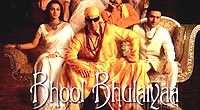
Soch (2002) Full HD Movie Download
.jpg)
Chandi Sona Full HD Movie Download
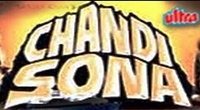
Meri Biwi Ka Jawab Nahin Full HD Movie Download
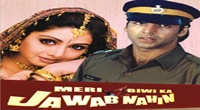
Char Darvesh Full HD Movie Download
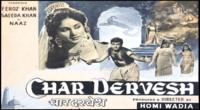
Paap Ki Duniya Full HD Movie Download
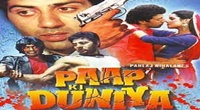
Tadipaar Full HD Movie Download
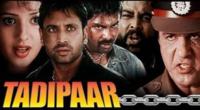
Laawaris Full HD Movie Download
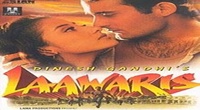
Do Knot Disturb Full HD Movie Download

Umar Pachpan Ki Dil Bachpan Ka Full HD Movie Download
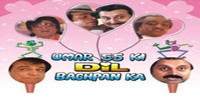
Kaaboo Full HD Movie Download
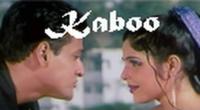
Gudia (1998) Full HD Movie Download
.jpg)
Amar Deep Full HD Movie Download
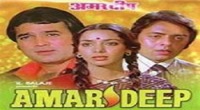
Hum Dono (1995) Full HD Movie Download
.jpg)
Beqasoor (1981) Full HD Movie Download
.jpg)
Abohomaan Full HD Movie Download
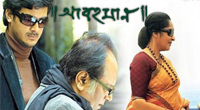
Gandhi Puttina Desam Full HD Movie Download
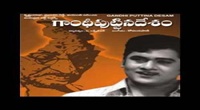
Swimming Pool Full HD Movie Download

Decoys Full HD Movie Download

Love Game Full HD Movie Download

Mooga Prema Full HD Movie Download
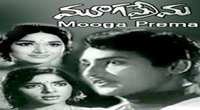
Download latest Movie from bollywood
- 1> baaghi 3
- 2> THE SKY IS PINK MOVIE FULL STORY AND REVIEW
- 3> Luka Chuppi
- 4> TO ALL THE BOYS I’VE LOVED BEFORE
- 5> Kabir Singh
- 6> Street Dancer 3D
- 7> Simmba
- 8> Gone Girl
- 9> The Girl Who Lived
- 10> Ludo
- 11> DILWALE DULHANIA LE JAYENGE
- 12> GUILTY
- 13> The Godfather
- 14> Adventures of Rusty
- 15> Sooryavanshi
- 16> Satyameva Jayate 2
- 17> Thappad
- 18> Bhool Bhulaiyaa 2
- 19> KGFChapter 2
- 20> Mardaani 2
- 21> Pinjar
- 22> Shivaji maharaj
- 23> Ek Villian 2
- 24> Hungama 2
- 25> Divergent
- 26> Mumbai Saga
- 27> The Internship
- 28> HIT (telugu)
- 29> Panga
- 30> The perfect date
- 31> 16 December
- 32> Gopala Gopala (Telugu)
- 33> Brahmastra
- 34> Gangubai Kathiawadi
- 35> Manmadhudu
- 36> Nenu local
- 37> Mahanati
- 38> Shatamanam bavathi
- 39> Lagaan
- 40> After
- 41> MOM
- 42> Shamshera
- 43> Raguvaran BTech
- 44> Khakee
- 45> The villain
- 46> OM
- 47> Mr. perfect
- 48> Bueatifull mind
- 49> Hichki
- 50> Gabbar Singh
- 51> Jogi
- 52> Before Sunrise
- 53> Before Sunset
- 54> Before Midnight
- 55> The Big Bull
- 56> Top Gun: Maverick
- 57> The Purge
- 58> The Sky is Pink
- 59> Laxmmi Bomb
- 60> Sadak 2
- 61> Sufna
- 62> Prithviraj
- 63> PK
- 64> Coolie No 1(2020)
- 65> Black Widow
- 66> Dear Zindagi
- 67> Dil Bechara
- 68> PHIR HERA PHERI
- 69> WAR
- 70> Dostana
- 71> RRR: Roudram Ranam Rudhiram
- 72> Maidan
- 73> Dabbang 3
- 74> Chhalaang
- 75> life as we know it
- 76> SherShaah
- 77> Sandeep Aur Pinky Faraar
- 78> Event Horizon
- 79> 83
- 80> Radhe: Your Most Wanted Bhai
- 81> Gunjan Saxena: The Kargil Girl
- 82> Mr India
- 83> Vivah
- 84> Anokha Bandhan
- 85> Ghost
- 86> Bhoot: Part One - The Haunted Ship
- 87> Haseen Dilruba
- 88> Laal Singh Chaddha
- 89> Qismat
- 90> Rajput
- 91> Drive
- 92> Dil Chahta Hai
- 93> Dil Ki Baazi
- 94> Dil Ka Rishta
- 95> Teesri Manzil
- 96> Dil
- 97> Love Aaj Kal
- 98> Khaali Peeli
- 99> Bunty Aur Babli 2
- 100> Atrangi Re
- 101> Gulabo Sitabo
- 102> Jodi
- 103> Suraj Pe Mangal Bhari
- 104> Deewana
- 105> Attack
- 106> Sardar Udham Singh
- 107> Toofan
- 108> THE LOVEBIRDS
- 109> Jersey
- 110> Ginny Weds Sunny
- 111> Thalaivi
- 112> Shiddat
- 113> Angels vs Zombies
- 114> Koi Mil Gya
- 115> Thank God
- 116> Bhuj: The Pride of India
- 117> Hum Aapke Hain Kaun
- 118> The Platform
- 119> Bird Box
- 120> Roohi Afzana
- 121> Torbaaz
- 122> Nikamma
- 123> World War Z
- 124> Extraction
- 125> Train to Busan
- 126> Life of Pi
- 127> SHAADI MEIN JROOR AANA
- 128> Himmat Aur Mehnat
- 129> To All The Boys: P.S. I Still Love You
- 130> Mimi
- 131> Good Newwz
- 132> Shubh Mangal Zyada Saavdhan
- 133> Raabta
- 134> Harry Potter and the Philosopher's Stone
- 135> Harry Potter and the Chamber of Secrets
- 136> Chhapaak
- 137> War of the Worlds
- 138> Harry Potter and the Prisoner of Azkaban
- 139> Harry Potter and the Goblet of Fire
- 140> MURDER MYSTERY
- 141> Shakuntala Devi
- 142> Bachchan Pandey
- 143> Jayeshbhai Jordar
- 144> Sheer Qorma
- 145> Saina
- 146> 'O' Pushpa I hate tears
- 147> Kedarnath
- 148> MS Dhoni The Untold Story
- 149> Chhichhore
- 150> Badhaai Ho
- 151> Unstoppable
- 152> Oz the Great And Powerful
- 153> The Girl on the Train
- 154> Haathi Mere Saathi 2020
- 155> The Conjuring: The Devil Made Me Do It
- 156> Gandhi Se Pehle Gandhi
- 157> The Song of Scorpions
- 158> Srimanthudu
- 159> Hello Guru Prema Kosame
- 160> Beauty and The Beast
- 161> Black Panther
- 162> Charlie and the Chocolate Factory
- 163> Bole Chudiyan
- 164> Fidaa
- 165> Duvvada Jagannadham
- 166> Bruce Lee: The Fighter
- 167> Hyper
- 168> Yaara
- 169> Red (2020)
- 170> Shivam
- 171> That Is Mahalakshmi
- 172> Nishabdham
- 173> Aashram 2020 web series
- 174> Laxmii
- 175> Mismatched
- 176> STUDENT OF THE YEAR 2
- 177> NAIL POLISH
- 178> Ramprasad Ki Tehrvi
- 179> KAAGAZ
- 180> 12 o Clock
- 181> The Power
- 182> bolo hau
- 183> Tribhanga
- 184> JAMUN
- 185> Madam Chief Minister
- 186> Maasaab
- 187> Aadhaar
- 188> Tanhaji
- 189> Bhaagi 3
- 190> Bhootnath
- 191> MALANG
- 192> Jai Mummy Di
- 193> Haathi Mere Saathi 2021
- 194> Shakeela
- 195> Unpaused
- 196> Annayya
- 197> Vamsoddharakudu
- 198> Mrugaraju
- 199> Narasimha Naidu
- 200> Sankranti
- 201> Manasu Maata Vinadhu
- 202> Anjaane
- 203> Apaharan
- 204> Bachke Rehna Re Baba
- 205> Bewafaa
- 206> Roohi
- 207> Radhe
- 208> Zindagi Khoobsoorat Hai
- 209> Yeh Mohabbat Hai
- 210> Yeh Kya Ho Raha Hai?
- 211> The Tomorrow War
- 212> DehradunDiary
- 213> Meri Shaadi Karaoo
- 214> Matruu Ki Bijlee Ka Mandola
- 215> No One Killed Jesica
- 216> Aag Ka Goola
- 217> Eight Million Dollars
- 218> Three Hundred
- 219> Cats and Dog
- 220> Decoy
- 221> Gold Rush
- 222> You Have Got Mail
- 223> Final Destination three
- 224> Tofan
- 225> Jungle
Request for Download movie Dharavi
- Bollywood movies
- Latest Bollywood movies
- Download all bengali movies
- Download all bhojpuri movies
- Download all english movies
- Download all gujarati movies
- Download all hindi movies
- Download all kannada movies
- Download all malayalam movies
- Download all marathi movies
- Download all oriya movies
- Download all punjabi movies
- Download all tamil movies
- Download all telugu movies
- Bollywood action movies
- Bollywood adventure movies
- Bollywood animation movies
- Bollywood classical movies
- Bollywood comedy movies
- Bollywood crime movies
- Bollywood devotional movies
- Bollywood documentary movies
- Bollywood drama movies
- Bollywood family movies
- Bollywood fantasy movies
- Bollywood historical movies
- Bollywood history movies
- Bollywood horror movies
- Bollywood musical movies
- Bollywood mystery movies
- Bollywood mythological movies
- Bollywood patriotic movies
- Bollywood romance movies
- Bollywood romantic movies
- Bollywood sci-fi movies
- Bollywood social movies
- Bollywood spiritual movies
- Bollywood sports movies
- Bollywood suspense movies
- Bollywood thriller movies
- Bollywood war movies
- Hot actress list
- Hot gujarati actress list
- Hot tamil actress list
- Hot bhojpuri actress list
- Hot assam actress list
- Hot bihari actress list
- Hot jammu and kashmir actress list
- Hot gujarati actress list
- Hot haryana actress list
- Hot konkani actress list
- Hot marathi actress list
- Hot odia actress list
- Hot punjabi actress list
- Hot rajasthani actress list
- Hot kannada actress list
- Hot malayalam actress list
- Hot telugu actress list
- Hot tulu actress list
- Hot Actress list from Indian city
- Hot actress list from ahmedabad
- Hot actress list from alappuzha
- Hot actress list from bangalore
- Hot actress list from bangalore
- Hot actress list from bhopal
- Hot actress list from chandigarh
- Hot actress list from chennai
- Hot actress list from guwahati
- Hot actress list from hyderabad, india
- Hot actress list from indore
- Hot actress list from jaipur
- Hot actress list from kannur
- Hot actress list from kochi
- Hot actress list from kolkata
- Hot actress list from kollam
- Hot actress list from kottayam
- Hot actress list from kozhikode
- Hot actress list from lucknow
- Hot actress list from madurai
- Hot actress list from mangalore
- Hot actress list from mumbai
- Hot actress list from mysore
- Hot actress list from new delhi
- Hot actress list from patna
- Hot actress list from pune
- Hot actress list from thiruvananthapuram
- Hot actress list from thrissur
- Hot actress list from tiruchirappalli
- Hot actress list from vijayawada
- Hot actress list from visakhapatnam
- All Bollywood Movies
- Bollywood Celeb
- >Art Director
- >Audiography
- >Background Music
- >Banner
- >Choreographer
- >Cinematographer
- >Costume Designer
- >Dialogue Writer
- >Director
- >Distributor
- >Editor
- >Executive Producer
- >Hair Stylist
- >Lyricist
- >Music Director
- >Photographer
- >Playback Singers
- >Presenter
- >Producer
- >Production Company
- >Production Designer
- >Screenplay
- >Singer
- >Sound
- >Actor
- >Story Writer
- >Studio
- >Video Director
- >Miscellaneous
- >Publicity (pro)
- >Web Creator
- >Production Labs
- >Publicity Design
- >Publicity Stills
- >Writer
- >Miscellaneous Artists
- >Visual Effects
- >Reporter
- >Music Company
- >Shooting Studios
- >Picturised On
- >Line Producer
- >Co Producer
- >Asst Director
- >Casting Director
- >Cinematography
- >Choreography
- >Dialouge
- >Editing
- >Lyrics
- >Music
- >Story
- >Playback Singer Female
- >Playback Singer Male
- >Actor In A Comic Role (male/female)
- >Child Artiste
- >Ensemble Cast
- >Actor Popular Choice (male)
- >Actor Popular Choice (female)
- >Sa Re Ga Ma Pa Song Of The Year
- >Actor In Supporting Role
- >Actress In Supporting Role
- >Actor In Leading Role
- >Art Direction
- >Actress In Leading Role
- >Sound Recording
- >Costume Design
- >Special Effects
- >Action
- >Actor In A Negative Role
- >Lifetime Achievement Award
- >Cinematic Exellence (director)
- >Cinematic Exellence (male)
- >Cinematic Exellence (female)
- >International Male Icon
- >International Female Icon
- >Actor In A Supporting Role (male)
- >Actor In A Supporting Role (female)
- >Actor In A Comic Role
- >Playback Singer (male)
- >Playback Singer (female)
- >Most Promising Debut (female)
- >Most Promising Debut (male)
- >Most Promising Director
- >Sound Design
- >Lifetime Jodi
- >Marketed Film
- >Jury Award For Best Actor
- >Jury Award For Best Actress
- >Jury Award For Best Film
- >Jury Award For Best Director
- >Playback Singer(male)
- >Lifetime Acheivement Award (male)
- >Excellence Award
- >Jodi Award
- >Performer Of The Year
- >Presented By
